The HR Tech industry is not showing signs of slowing down any time soon, with $12 billion investment in 2021. Doubling the previous two years total investment, and starting 2022 with the $1.7 billion investment in January nearly as high as the strongest month in 2021, explains Anita Lettink in her recent LinkedIn post. The HR Tech Funding 2021 report is indeed an invigorating morning read for anyone passionate about HR Tech.
Yes, we keep talking about the pandemic, but it is a big deal and did change the world of work significantly. Return to work is becoming a what if, knowledge workers are not too keen on commuting to the office, companies realizing that the notion of the 9 to 5, Monday to Friday physical office environment might be counterproductive. HR Tech sees this changing trend and responds with the right tools accordingly. Modern HR tech is all in the cloud, AI, machine learning, automation, and analytics are in the center of managing the remote workforce.
21+1 new unicorns are named in the report: Beisen, BetterUp, Checkr, Culture Amp, Deel, Degreed, Go1, Gympass, Justworks, Lattice, Lyra, Papaya Global, Paradox, Personio, Phenom People, Remote, Ripplin, SmartRecruiters, Visier, When I Work, YXT and later added HiBob.

The report highlights an awesome spread of diversity with companies originating from 40 countries, many from developing nations like India, Indonesia, Brazil, China, Chile, Kenya, Vietnam or Peru. Unfortunately, the gender diversity of Woman founders is less than 10%, to deepen this divide Workbench report finds just 1.9% of venture investment going to female enterprise founders, so I guess HR Tech is actually much better than the avarage but still far from where it should be!
HCM and Payroll are leading all HR investment funding by far, with $4.7 billion investment in 2021, with all others lagging a “bit” behind with Talent Management $1.9 billion, Talent Acquisition 1.5 billion, Learning $1.2 billion, Wellbeing $1 billion, and Benefits nearly scraping into the “Billionaires Club” with $838 Million. The rest all take a much smaller chunk of the pie.

We see an average funding size of 38 million per round with the largest being 425 million for Deel (the HCM & Pay provider) closely followed by BetterUp, Paycor, Personio, and Beisen. I had the pleasure of working on quiet a few projects with Personio for the past 3-4 years and their outstanding success is not surprising to me, but all these above-mentioned brands have the potential to dominate their market in the coming years. I also had the pleasure to work with Hibob recently (later added to the report) raised $150 million at a $1.65 billion valuation late last year according to TechCrunch, also a force on the HR tech landscape to be reconned with. Let’s not forget Culture Amp (not mentioned in the report) with $100 million funding achieved last year, been on the HR Tech scene for over 12 years now, another fantastic brand I had the pleasure of working with last year.
I am eager to see how these companies will deliver on investor KPI’s this year to unlock the next portion for their achieved findings. From what I have experienced from Personio, Culture Amp, and Hibob, and what I see out there from the others they are on the right trajectory.
The shifting tides of the pandemic from lockdowns to no lockdowns, from travel bans to no travel bans back and forth created much uncertainty. The fast injection of 1 billion into Mental health and wellbeing early last year sharply fell and was replaced by a focus on Retention, Talent Acquisition, Benefits, Compensation, battling with the growing trend of the “Great Resignation” in the second half of the year, something that is predicted to taper off in the senod half of 2022, according to Roy Maurer from SHRM.
The only good thing about the Pandemic is it forced us to start using technologies, HR tech tools are no longer “a nice to have” but a fundamental part of the business. We are now truly in the cloud, we are truly working remotely and now also hiring remotely, organisations are no longer bound by geographical location when hunting to hire the next future employee of the year. Our organization has been working with some of its staff remotely for many years now, I am based in Australia since 2017, my business partner Mihaly Nagy is based in Budapest, but we now have team members working with us remotely from Pakistan, India, Kenya, the UK, US, Indonesia and so on, now when we look for new talent we are looking for solutions that can open a global network for potential candidates.
The remote workforce trend prompts organizations to source staff from anywhere. As Anita put it in her report “The remote work market is in its infancy”, the rise of gig platforms, new fintech solutions, and new HCM and Pay solutions are emerging.
The abundance of young professionals from Africa, the Middle East, South America, and India are eager to fill the labor shortage gap of the aging European, Japanese, and North American population. Remote work and the solutions with it are going to explode, this is only the beginning.
What HR tools will we need to help the adoption of a young eager, smart, and educated, but perhaps lacking the experience, westernised business culture (might actually be a good think) workforce from developing nations. We will need all the tools to build a multcultural, multiliguaral, georgpahically divers global workforce! But I see a bright future of a truly collective global work culture.
As the truly eye-opening book “Factfulness”, by Hans Rosling demonstrated this; a massive number of people from developing nations are now ready with the right education to show the world what they can do. 2 billion people in Asia and Africa are ready to fill the gap in Europe and North America. 2 billion are predicted to elevate their lives out of poverty in the next 20 years to the level where they can enter the workforce as skilled labour or knowledge workers. Rosling breaks up the global population into 4 levels. On level 1 for example you spend your entire day fetching water, collecting firewood, and maintaining some basic crops for food. On level 2 you can afford more buckets and a bike, so the process is faster, 4.6 billion people live like this today. Out of these 1.6 billion will be elevated to level 3 in the next 20 years where they can afford a motorbike, running water in their home, stable electricity, and medicine. Our level 4 life is enjoyed by 1.3 billion people, this means at least 12 years of education is achievable, this will grow to 1.7 billion by 2040. That is 400 million brand new knowledge workers in the next 20 years ready to show what they can do! Let’s see how HR Tech will respond to this.
References:
https://www.amazon.com/Factfulness-Reasons-World-Things-Better/dp/1250107814
https://worldpopulationreview.com/country-rankings/developing-countries
Written by: Thomas Papp
COVID-19 Culture Employee Experience Future of Work HCM HR Tech HR Tech Funding Payroll Strategy & Transformation Talent Management
Previous post

- 1246
labelVideos today2022.02.18.
Leadership lessons for the lockdown and recovery – interview with the chairman and CEO of WD-40, Garry Ridge
“My philosophy on company culture is based on what Aristotle said in 384bc – “Pleasure in the job puts perfection in the work.” Turning that into action, I believe that [...]
Similar posts

labelArticles today2024.07.24.
AI-Powered HR: Strategic Benefits and Practical Applications

labelArticles today2024.06.24.









Post comments (0)